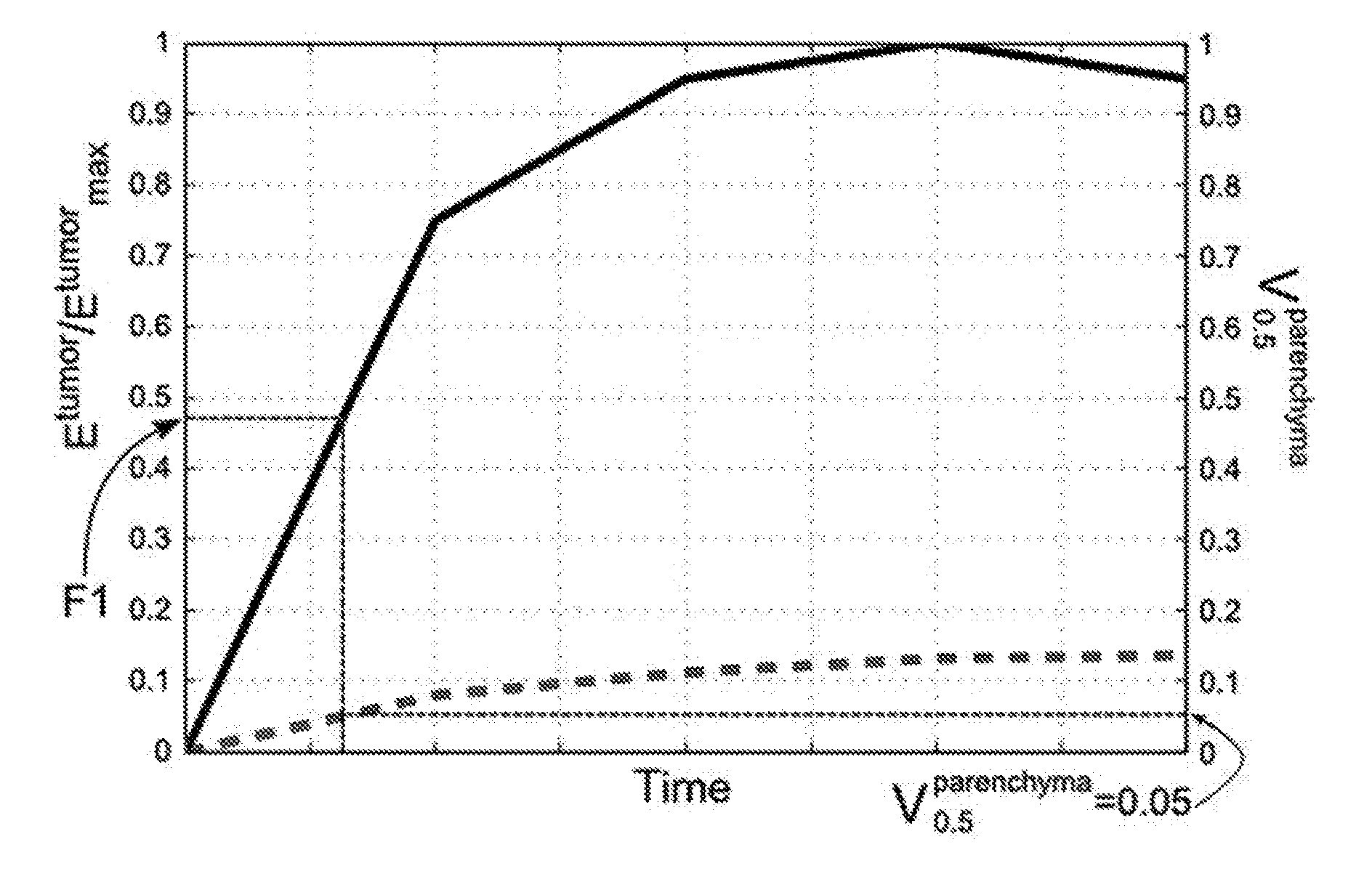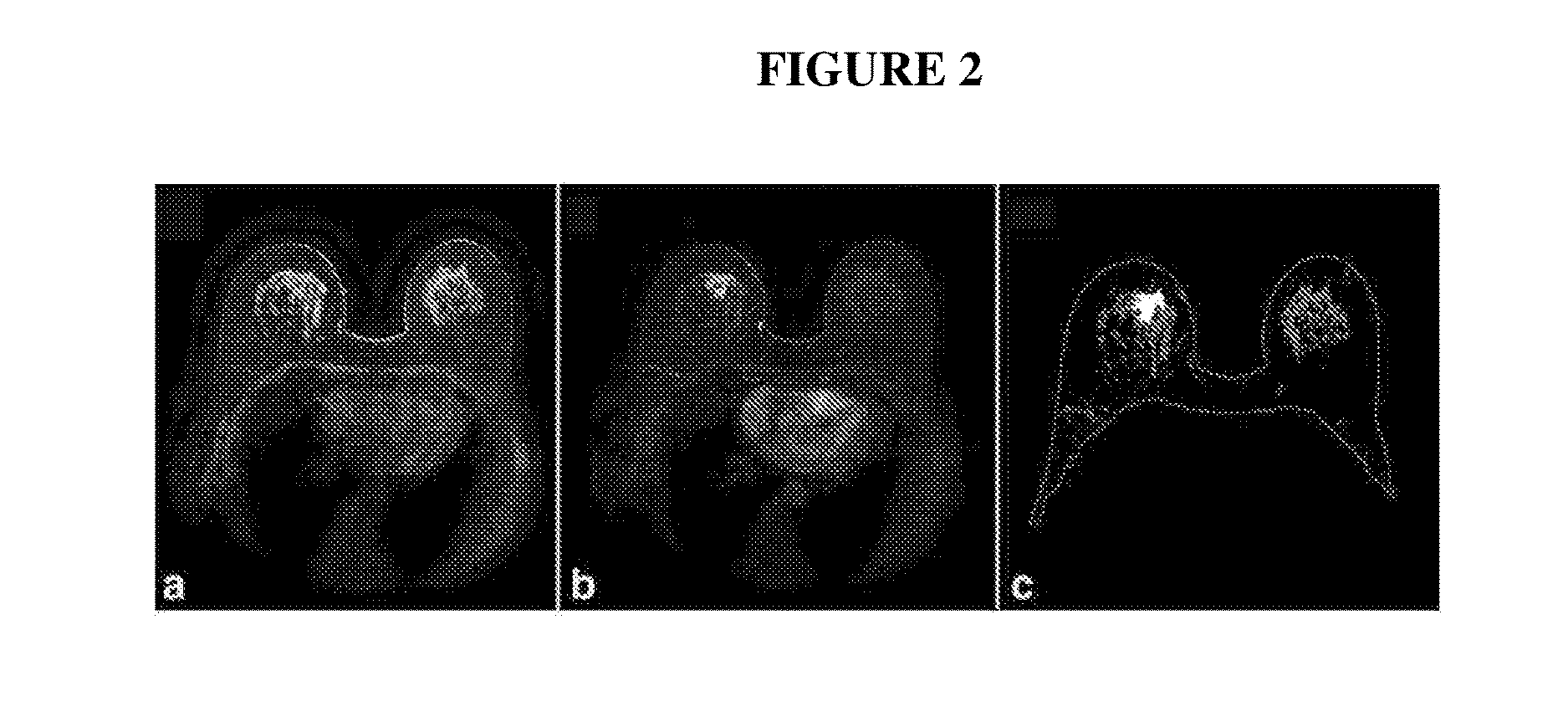Systems and methods for extracting prognostic image features
- Summary
- Abstract
- Description
- Claims
- Application Information
AI Technical Summary
Benefits of technology
Problems solved by technology
Method used
Image
Examples
example 1
Luminal B Breast Tumor Molecular Subtype is Associated with MRI Tumor Enhancement Dynamics
[0076]This was an institutional review board approval exempt study of information from a publically available database. We used the Breast Cancer Risk Assessment dataset recently made available by the Cancer Imaging Archive. The Cancer Imaging Archive dataset contains imaging studies for a subset of patients from the Cancer Genome Atlas. The Cancer Genome Atlas database contains full genomic sequencing and clinical data for the patients. The two databases were correlated by using unique patient identifiers.
[0077]A fellowship-trained breast imager (S.C.Y., with 9 years of experience reading breast MR images) marked the MR images by drawing a box containing the abnormality. The reader used a graphical user interface developed in our laboratory. The lesions were classified into four genomic subtypes as luminal A, luminal B, HER2-enriched, or basal-like. The subtyp...
example 2
Luminal A and Luminal B Molecular Subtypes are Associated with Imaging Features Extracted Following Routine Breast MRI
[0087]Institutional Review Board approval was secured for the collection and analysis of this Health Information Portability and Accountability Act compliant study with a waiver of informed consent. We retrospectively collected data from a total of 400 consecutive preoperative breast MRIs that were performed between September 2007 and June 2009. We excluded patients undergoing breast cancer treatment at the time of the MRI (e.g., chemotherapy or radiation therapy, N 29), and those with a history of elective breast surgery (e.g., implants or mammoplasty, N 19) or remote prior breast cancer (i.e., those having undergone previous definitive therapy, N 19). Patients without complete pathology data available for review (e.g., hormone receptor status) were excluded (N 42). There were subsequently 291 routine preoperative breast MRIs availa...
example 3
Breast Cancer Progression-Free Survival is Associated with MRI Tumor Enhancement Dynamics
[0102]Institutional Review Board (IRB) approval was secured for this study. We retrospectively collected data from 400 consecutive preoperative contrast enhanced breast MRIs from September 2007 through June 2009. Patients with a history of elective breast surgery (e.g., implants or mammoplasty, n=19) or remote prior breast cancer (i.e., those having undergone previous definitive therapy, n=19), as well as those undergoing breast cancer treatment at the time of the MRI (e.g., chemotherapy or radiation therapy, n=29) were excluded. Additionally, patients with missing pathology data (e.g., tumor grade) were excluded (n=42). This resulted in 291 patients with preoperative breast MRIs available for analysis. After a review of the imaging sequences, cases were excluded if they were missing sequences (n=3) or if the number of slices were different between pre and postc...
PUM
 Login to View More
Login to View More Abstract
Description
Claims
Application Information
 Login to View More
Login to View More - R&D
- Intellectual Property
- Life Sciences
- Materials
- Tech Scout
- Unparalleled Data Quality
- Higher Quality Content
- 60% Fewer Hallucinations
Browse by: Latest US Patents, China's latest patents, Technical Efficacy Thesaurus, Application Domain, Technology Topic, Popular Technical Reports.
© 2025 PatSnap. All rights reserved.Legal|Privacy policy|Modern Slavery Act Transparency Statement|Sitemap|About US| Contact US: help@patsnap.com



